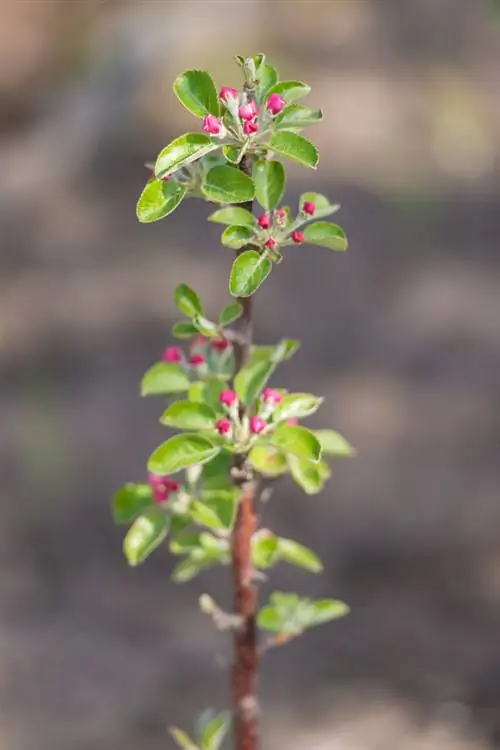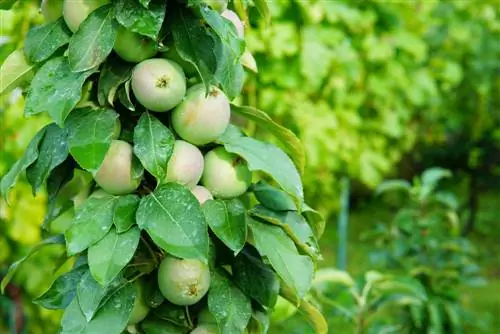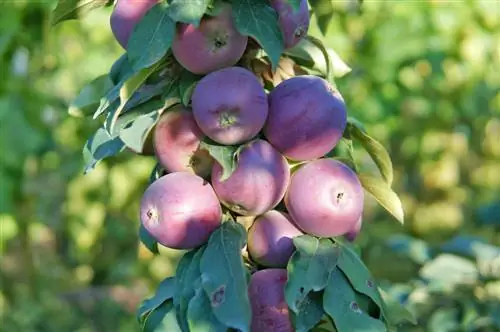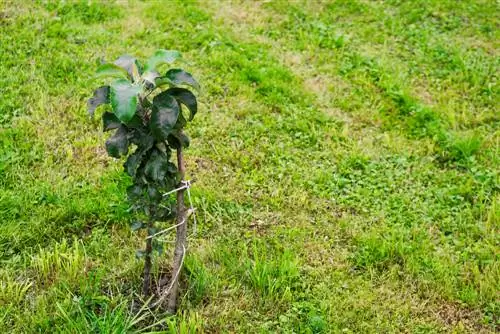- Author admin [email protected].
- Public 2023-12-16 16:46.
- Last modified 2025-01-23 11:21.
Pillar fruit has enjoyed steadily increasing popularity in recent years, as it promises a tempting yield of apples, pears or cherries freshly harvested from the tree, even in the smallest areas. Since these types of fruit trees are only available in specialist shops at relatively high prices, many a hobby gardener would like to grow their own fruit trees.
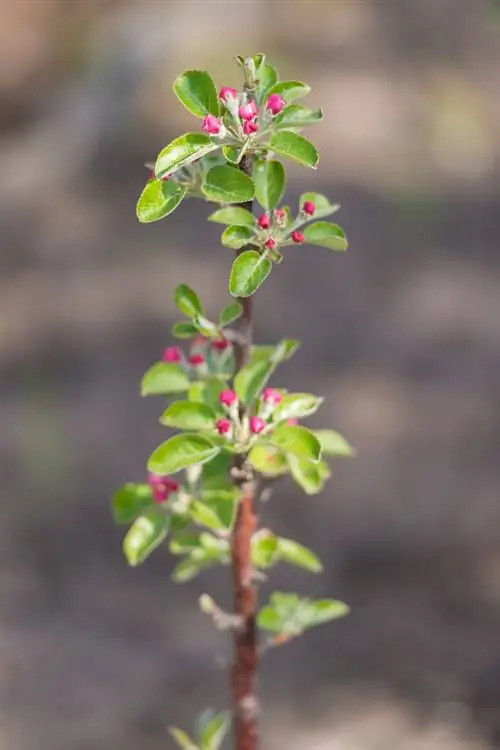
How can you grow your own fruit?
Growing columnar fruit yourself is not easy, as special refinements and genetic material are required. For cultivation at home, normal fruit trees can be made into a columnar shape through targeted cuts or raspberries and blackberries can be grown on trellises.
It's not that easy to grow columnar fruit
When we talk about so-called columnar fruit, these days it usually doesn't simply mean the topiary of fruit trees into a columnar shape. It's more about fruit that grows in a columnar shape and maintains its special growth form without any intervention from the gardener. This works through the use of specially selected material from which plants with very specific genetic predispositions to their growth habit are grown. As a rule, the scions of a columnar apple, pear or other type of fruit are grafted onto a rather strongly growing rootstock. The aim is that the roots of the plant, as a strong growing base, can transport many nutrients into the plant's juice cycle, while the upper part of the plant enables a maximum fruit yield with only a small growth in the plant mass. Columnar cultivars are now available, for example, for the following types of fruit:
- Apples
- Pears
- Cherries
- Plums
- Plums
- Apricots
- Peaches
You need these ingredients to grow home-grown columnar fruit
In order to be able to grow columnar fruit yourself, it is far from enough to germinate the cores of apples or pears. Ultimately, the high yield of columnar fruit due to its special growth habit is only possible by combining an appropriate scion with a suitable rootstock. Of course, there are also hobby gardeners who are very familiar with the refinement of fruit trees and are therefore confident enough to grow columnar fruit in their own garden. However, many of the elaborately bred columnar fruit varieties are varieties protected by variety law, the reproduction of which is usually legally illegal or at least in a certain gray area.
Make conventional types of fruit into a columnar shape through targeted cutting
As an alternative to the effort of growing columnar fruit yourself with all the associated difficulties, you could also try to bring a “normal” or ungrafted fruit tree into at least an approximate columnar shape through targeted pruning measures. However, it is necessary to start making carefully considered cuts as early as possible. However, it must also be clear to you that the columnar fruit trees grown in this way have to be cut very regularly and often cannot keep up with the elaborately refined cultivars in terms of yield.
Tip
You can give raspberries and blackberries a columnar shape without any refinement measures if you simply tie them up to an appropriate trellis every year as new canes grow.

